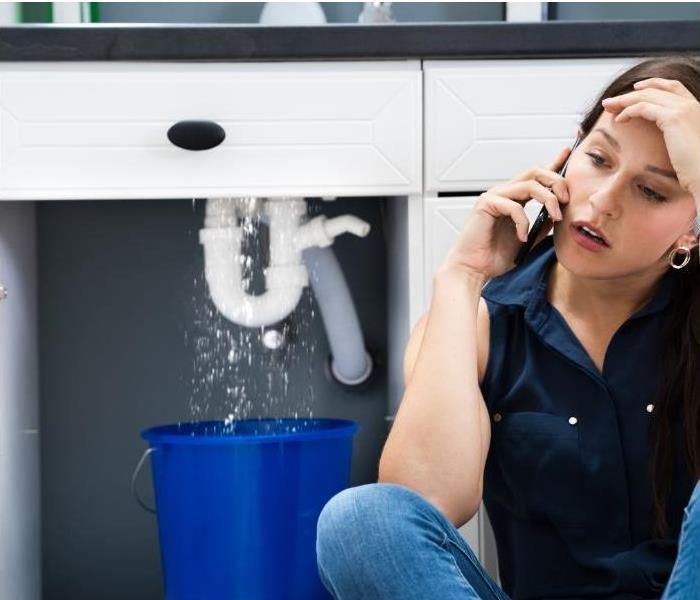Comprehensive Guide to Local Water Restoration Services and Providers
8/17/2023 (Permalink)
When disaster strikes, water damage can wreak havoc on your property, turning a place you call home into a potential health hazard and financial burden. This comprehensive guide explores the world of Local Water Restoration Services and Providers to help you navigate through the chaos and restore your property to its former glory.
Understanding Water Restoration
Water restoration refers to the professional process of cleaning, drying, sanitizing, and restoring (or rebuilding) spaces affected by water damage. The importance of this service is twofold:
Preventing Structural Damage
If left untreated, water damage can lead to severe structural problems, including weakened foundations and mold growth.
Protecting Health
Water damage often leads to the growth of mold and other harmful pathogens, presenting significant health risks if not promptly and properly addressed.
Common Causes of Water Damage
Water damage can occur from various sources. Being aware of potential threats helps in prevention and timely mitigation:
- Floods: Whether from heavy rains, overflowing rivers, or a burst levee, floods can cause extensive water damage.
- Plumbing Issues: These can include burst pipes, leaky faucets, and issues with a water heater or appliances.
- Storms and Natural Disasters: Hurricanes, tornadoes, and other extreme weather conditions can lead to severe water damage.
- Sewage Backup: Sewer backups are not just unpleasant; they're hazardous due to the contaminants they carry.
Types of Water Damage
There are three categories of water damage that restoration services deal with:
- Clean Water Damage: This involves water that does not pose an immediate threat to humans, often from overflowing sinks or broken appliances.
- Grey Water Damage: Here, the water is contaminated and may cause illness if ingested, such as a toilet bowl overflowing with urine.
- Black Water Damage: The most dangerous type, black water, includes sewage and flood water that can lead to severe health problems.
The Water Restoration Process
The water restoration process can be divided into several key stages:
- Inspection and Damage Assessment: This is where professionals determine the water damage extent and devise an appropriate action plan.
- Water Extraction: Using professional-grade vacuums and pumps, the water removal process begins promptly to mitigate further damage.
- Drying and Dehumidification: After water extraction, surfaces are dried and dehumidified to remove the remaining moisture.
- Cleaning and Sanitizing: Affected areas are cleaned, sanitized, and deodorized to eliminate potential mold or other health hazards.
- Restoration: The final step involves minor repairs, such as replacing drywall or installing new carpet, and may extend to major reconstruction work.
The Importance of Local Service Providers
Local service providers play a critical role in managing water damage situations:
- Quick Response Time: Local providers can reach you faster, crucial in water damage scenarios where prompt response can mean the difference between minor repairs and major restorations.
- Local Knowledge: Local providers understand regional plumbing codes, and weather patterns, and have relationships with other local contractors and inspectors.
Choosing a Water Restoration Provider
Key aspects to consider when choosing a water restoration provider:
- Certification: Ensure the company has professionals certified by reputable bodies like the Institute of Inspection, Cleaning, and Restoration Certification (IICRC).
- Experience: Look for a company with extensive industry experience and positive customer reviews.
- 24/7 Availability: Water damage can occur anytime, and immediate action is vital. A company offering round-the-clock service is preferable.
- Comprehensive Services: The company should provide a wide range of services, including water extraction, drying, cleaning, sanitizing, and full restoration.
Insurance Considerations
Water damage repair costs can be significant, so it's essential to know how your insurance can assist:
- Understand Your Policy: Not all policies cover all types of water damage. Understand your policy's specifics to know what is covered.
- Work with Professionals: Experienced restoration services often offer to work directly with your insurance company, helping to save time and ensure you receive the maximum benefits.
Health Risks Associated with Water Damage
Post-water damage, the growth of mold and other harmful pathogens is a primary concern. These can lead to a range of health issues, from allergies and skin irritation to respiratory problems and more severe diseases. A professional water restoration service will use high-quality cleaners and sanitizers to ensure your environment is safe.
Conclusion
Experiencing water damage can be overwhelming. However, with the right information and the help of a local water restoration service provider, you can navigate the recovery process effectively. Remember, prompt action is key to minimizing damage and associated repair costs, so choose a 24/7 available, certified, experienced, and well-reviewed local provider. After all, their expertise in water extraction, drying, cleaning, sanitizing, and restoration can help return your property to a liveable, loveable state.






 24/7 Emergency Service
24/7 Emergency Service
